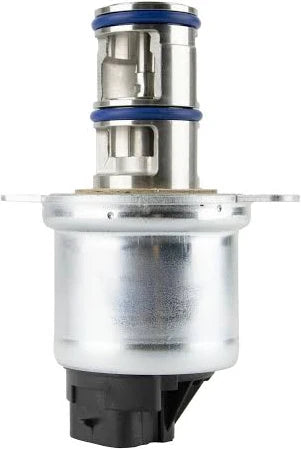While there are plenty of ailments that can slow down your vehicle, one of the more common with newer vehicles is a bad EGR valve. While these EGR valves have some performance and environmental benefits, they’re notorious for clogging.
Symptoms of a Bad EGR Valve
- Check Engine Light
- Increased Emissions
- Decreased fuel economy
- Reduced power
- Rough Idle
- Engine Knock
Check Engine Light
There’s tons of sensor monitoring your emissions, engine performance, and even the EGR valve’s performance. Whether the EGR valve is clogged, stuck open, or stuck closed, you’re going to get a check engine light.
While the check engine light will usually point you straight to the EGR valve, it is possible that it might come on due to a symptom instead of a cause. For instance, you might get a check engine light that indicates excessive exhaust chemicals or misfires, even though the problem stems from a faulty EGR valve.
Increased Emissions
Your EGR valve’s primary purpose is to reduce emissions, so you can expect that if it’s not working correctly, your overall emissions will increase. In fact, if you have a faulty EGR valve, your vehicle will most likely fail an emissions test.
You can often notice a slight increase in the amount of smoke when the EGR valve is bad, but most often it is not very common.
Decreased Fuel Consumption
Your EGR valve works to send the right amount of exhaust back to the combustion chamber – one of the advantages of this is that it reduces the combustion chamber’s temperature and improves efficiency.
But when the EGR valve is stuck open, the engine will suck in air that is already measured by the Mass Air Flow (MAF) sensor, leading to a lean air-fuel mixture and a reduction in fuel consumption. While this might sound like a great symptom, it can damage your engine.
Reduced Power
Not only does an optimized engine improve fuel economy, but it also improves engine performance.
You’ll notice the problem more at lower speeds if the EGR valve is stuck open and at higher speeds if the EGR valve is stuck closed.
You might also notice that your acceleration has become jerky or rough.
Rough Idle
If your EGR valve is stuck open, then you’re going to get a rough idle, especially when your vehicle hasn’t warmed up yet. That’s because usually, the EGR valve starts in the closed position.
However, if the EGR valve is stuck closed, you’ll notice more problems while idling after the engine has already warmed up. That’s because the EGR valve is typically open then as it recirculates exhaust to lower the overall temperature of the combustion chamber.
Engine Knock
One of the lesser-known perks of the EGR valve is that it actually reduces engine knocking. Keeping the combustion chamber at a lower temperature prevents the fuel from igniting before it should.
While this won’t always happen if you have a faulty EGR valve, the chances go up dramatically if the valve is stuck closed. If you have a check engine light on for a faulty EGR valve, keep an ear out to see if you can hear any knocking.
RecommendationsIf you can, you need to make repairs immediately before any further damage occurs.
The EGR valve takes specific amounts of exhaust and recirculates it back to the combustion chamber. EGR Valve stands for exhaust gas recirculation valve, which breaks down exactly what it does.
Recirculating the exhaust does a few things for overall performance. First, it optimizes the fuel to air ratio without pulling in extra air from the intake.
Not only that, but the exhaust has a different chemical makeup than fresh air. This different chemical makeup allows the combustion chamber to stay up to 150 degrees Celsius cooler, which produces cleaner exhaust and improves overall engine performance.
Since the EGR valve runs off sensors, it knows when to open and when to close to optimize performance, but when these sensors fail, or the EGR valve gets stuck, then you’ll have problems as a result.

